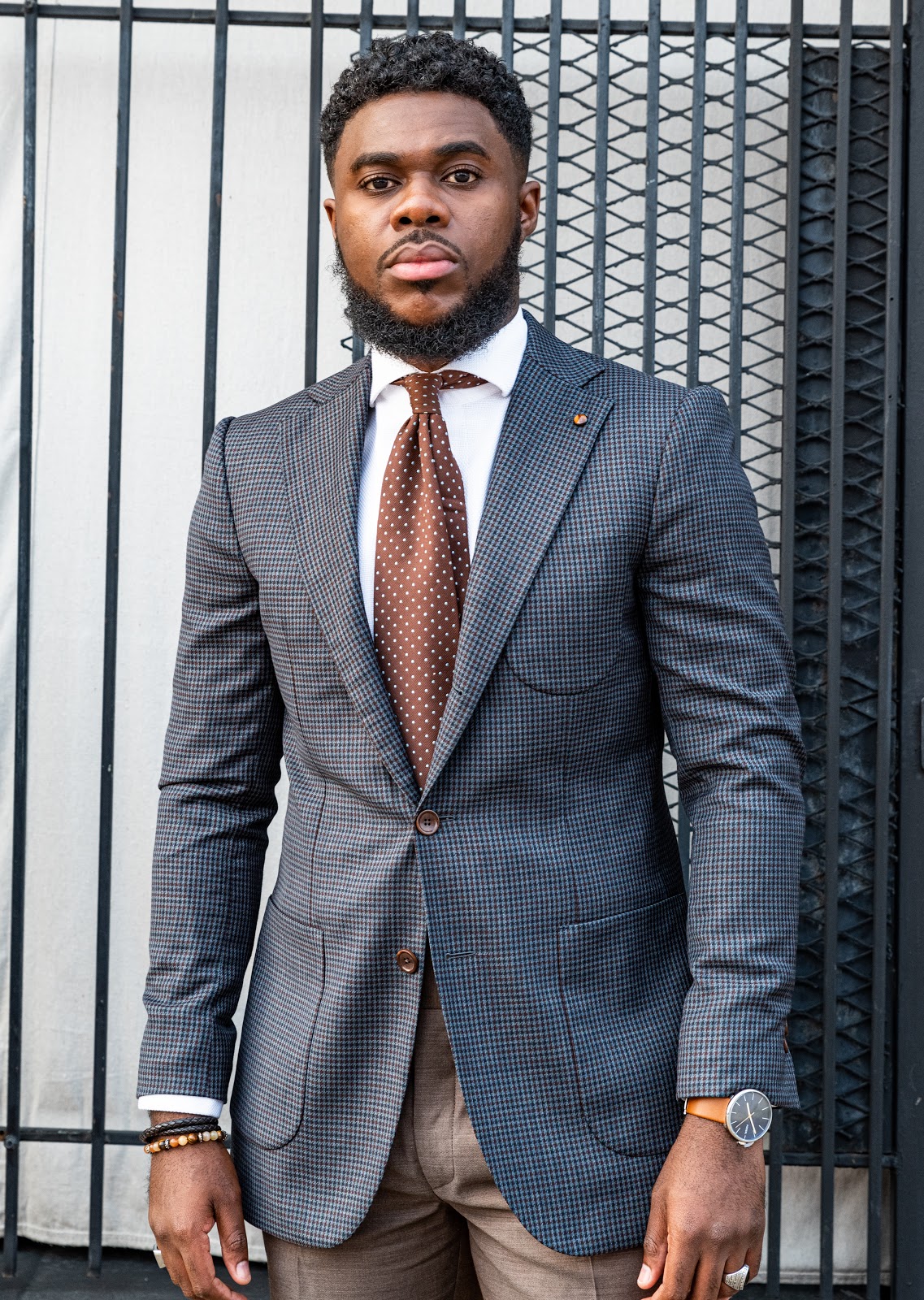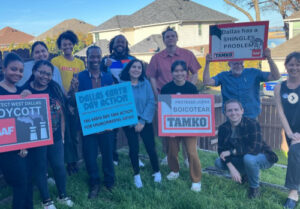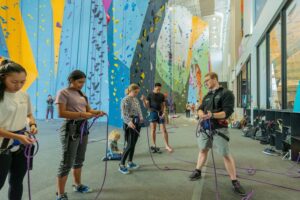
A few weeks ago I had the privilege to speak to Eric Hartter, the co founder, designer, and Chief Executive Officer behind HARTTER|MANLY. This conversation sparked my interest in how designer suits would adapt to COVID-19. Since then, new owners have come into the bankrupt Brooks Brothers to really turn the brand around like bringing on Michael Bastian as a new head designer. I’ve reached out to Abraham Ngomo, the menswear consultant at BramsTouch, to discuss what will occur next in the made-to-measure tailoring business.
Hello Abraham, how have you been staying inspired and productive during COVID?
Even before COVID, our brand was designed to educate men about menswear and tailoring and to inspire love of the art rather than the business side of it. COVID actually gave a lot of our clientele the opportunity to sit and delve into the greatness that is custom tailoring. Just that alone, has given us ample reason to continue to be inspired. There is a true interest that is growing amongst men to sophisticate their wardrobes and we are here to feed the flame.
Is there any key lesson to be learned from the decline of Brooks Brothers?
I think the lesson would be to make sure you are reading your clients. We need to take the time out to see what they are in need of or what they are looking for and then meet them there. COVID has really altered the industry and we need to make sure that we are flexible and willing to shift with the current.
Will suits need to adapt to a younger generation and if so how?
Suits will definitely need to adapt to the younger generation. We are seeing a lot of it happening right now. For the younger generation, it’s all about fast fashion or what’s trending. As a company, we need to take that into consideration.
The good news is, we are seeing young people purchase their “first” suit earlier, whereas 5-10 years ago, someone may not have owned a suit until they were post college or starting their career. With sartorial trends on social media, big events like Pitti Uomo, and all these menswear pages, it’s become cool again to be suited up. It also helps that there has been a rise in how many “affordable” suiting houses we are seeing. They are sprouting up in every corner of America, and you can order a made-to-measure garment online in just a few minutes through your computer. All of this is making it more attainable for our younger generation. I’ve even noticed that a lot of these fast fashion brands are starting to incorporate suits into their catalogs which makes it that much easier for young people to get their hands on them.
That’s where we come in, not only do we want to get suits to younger people, but get it to them the right way. We want to teach them every single aspect of a suit and how to build their wardrobe properly.
What are potential influences you see occurring in men fashion post COVID?
I’m not big into this main-stream idea of “fashion” mainly because it is all about a seasonal trend and therefore always changing. However, as far as the suiting industry, which is my field of focus, I believe a lot of Bespoke and made-to-measure houses will tend to perfect their crafts and tools for remote measurement systems.
Personally, at Bramstouch, we love a face-to-face consultation but even prior to COVID, my team and I narrowed down a strategy on how to get to our overseas clients. That is where our remote program really went live. We have a massive clientele in the Congo and a few countries in Europe including France and Belgium.
COVID just validated our decision to work on a remote measurement system. We were able to produce videos for our measurement taking system that we then sent out to our tailors so that our clients’ measurements are accurate.
So to answer your question, I honestly think every house, even those faithful to the oldest Bespoke techniques, will have to include a good remote measurement taking system as a lot of clients will want to work with an online brand rather than come into a building or showroom.
Are there any common misconceptions or under-appreciated aspects of the suit industry?
Of course.
First, the main misconception a lot of tailors and menswear aficionados have been talking about for years is the difference between a Bespoke and a made-to-measure suit. Even though there are a lot of similarities, there are a few main differences that are important to note. For instance, MTM garments always involve some form of standardization in the pattern used and the way it is manufactured. Usually, the MTM specialist will use a try-on garment for accuracy. Bespoke garments on the other hand are made entirely from scratch using a clients’ measurements. There is a lot more attention to detail which requires clients to attend multiple fittings during the construction of the garment. This could range anywhere from 3-6 fittings depending on the tailor or the house the garment is coming from. This garment is then constructed by hand which requires hours upon hours of tedious work.
With that being said, I find it sad when brands market themselves as having a Bespoke program to clients who may be ignorant of this fact in order to make money off of them. This is a large sartorial debate within the industry but it’s important for clients to know what they are buying and to be educated in every single aspect before they sign up for said programs.
The under-appreciated aspect would be the price point. There are a lot of brands out there that do a good job but are facing less appreciation from clients because of pricing.
This ties into clients not being educated about the industry. A lot of times they compare the price of a ready to wear suit with that of a made-to-measure one. It’s not the same. You have to understand the craftsmanship process behind the garments including all the customization that comes with it. Gentlemen need to know more about garments and have a personal history with them instead of just buying them blindly. The business side is good but it’s more important to spread the culture and tradition behind the history of the suit.

